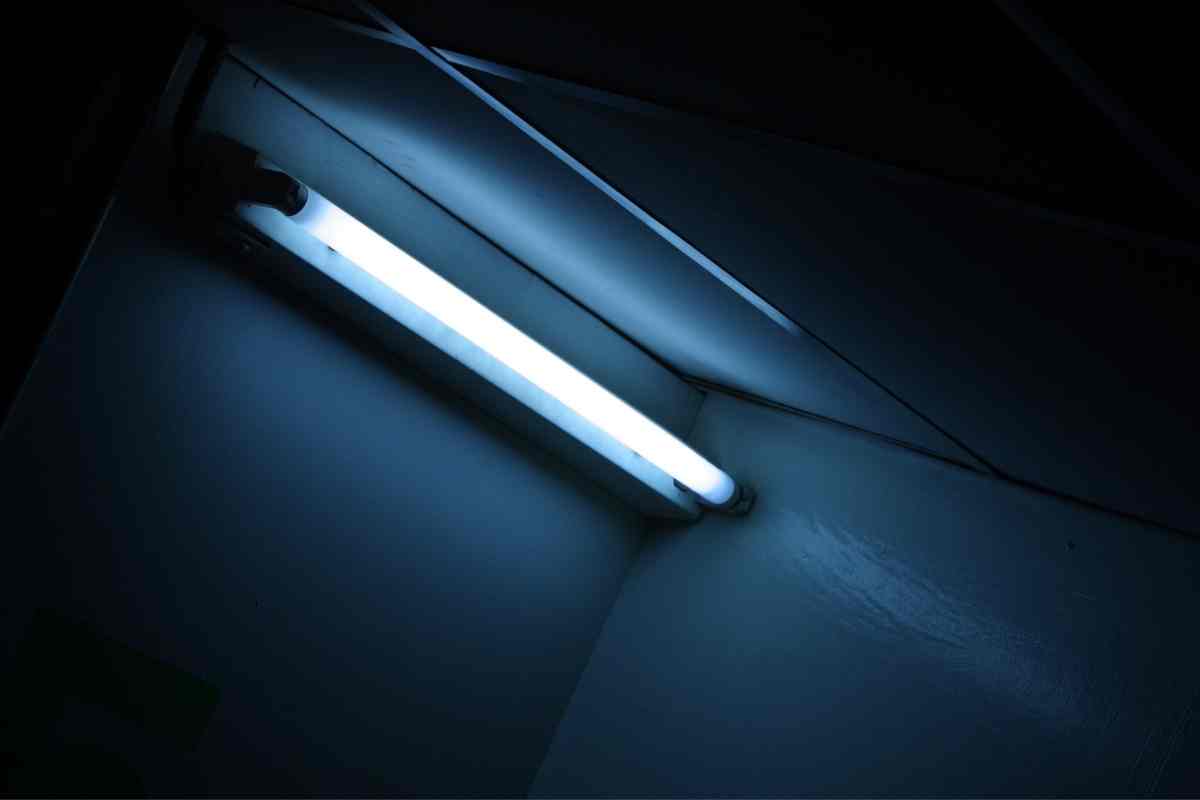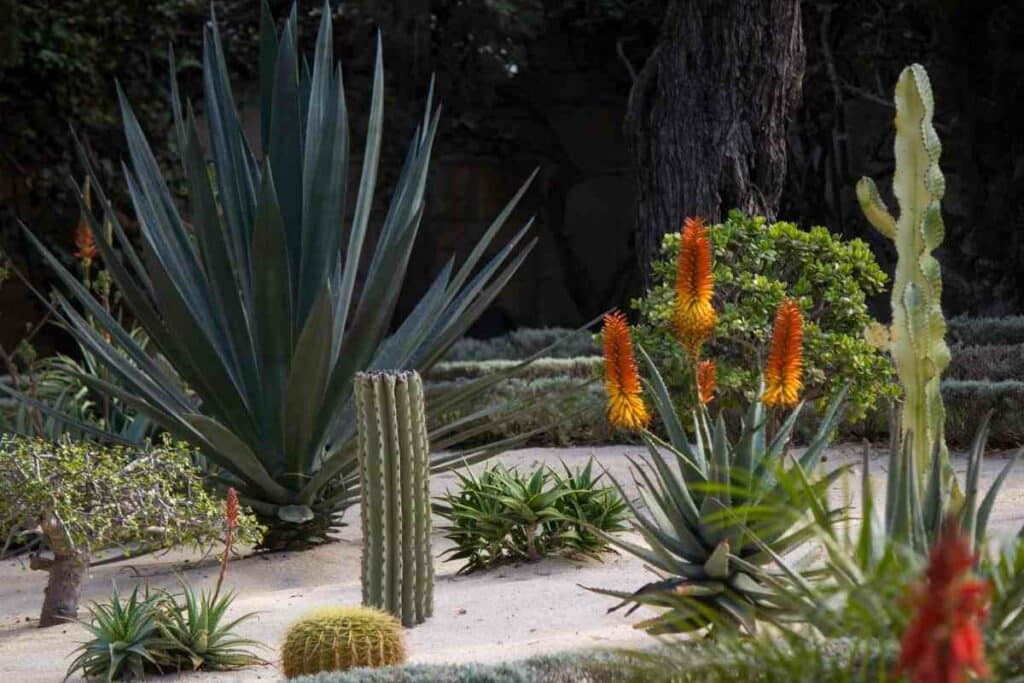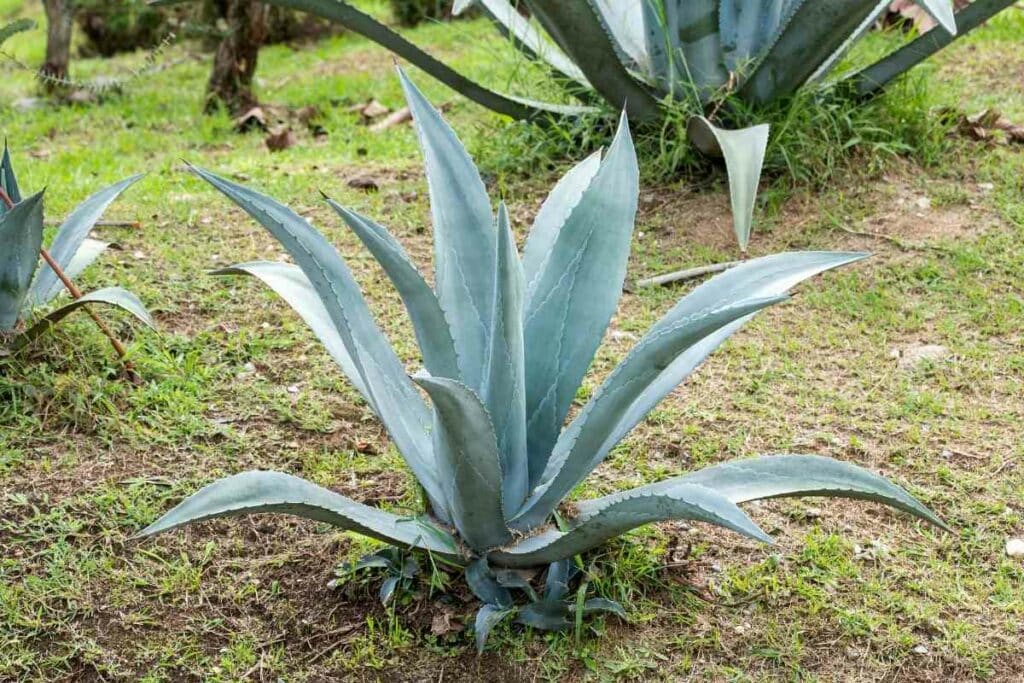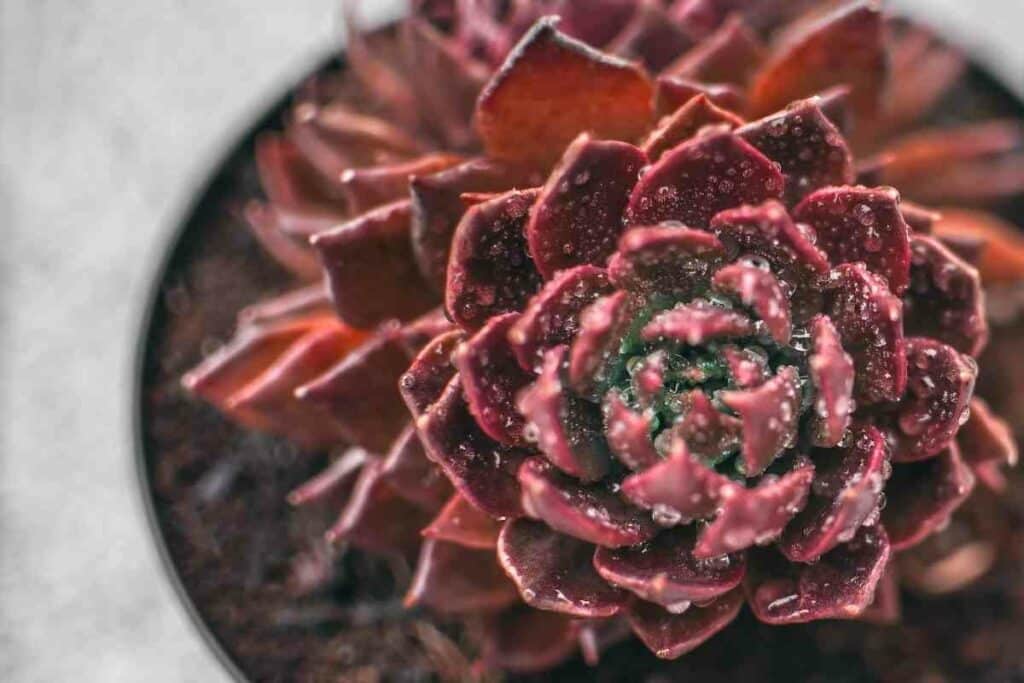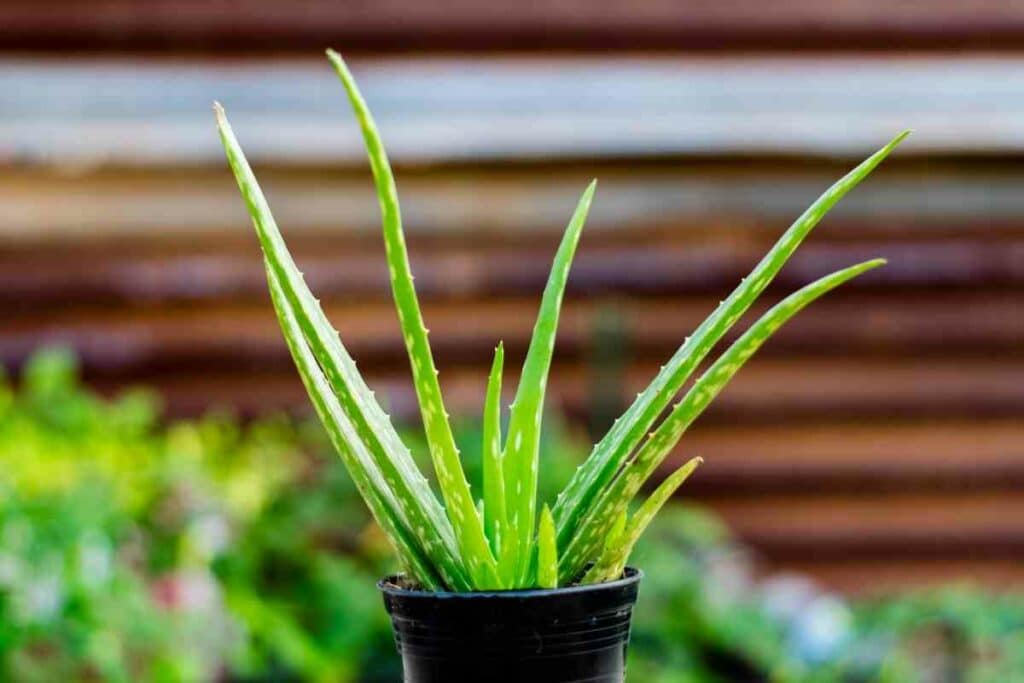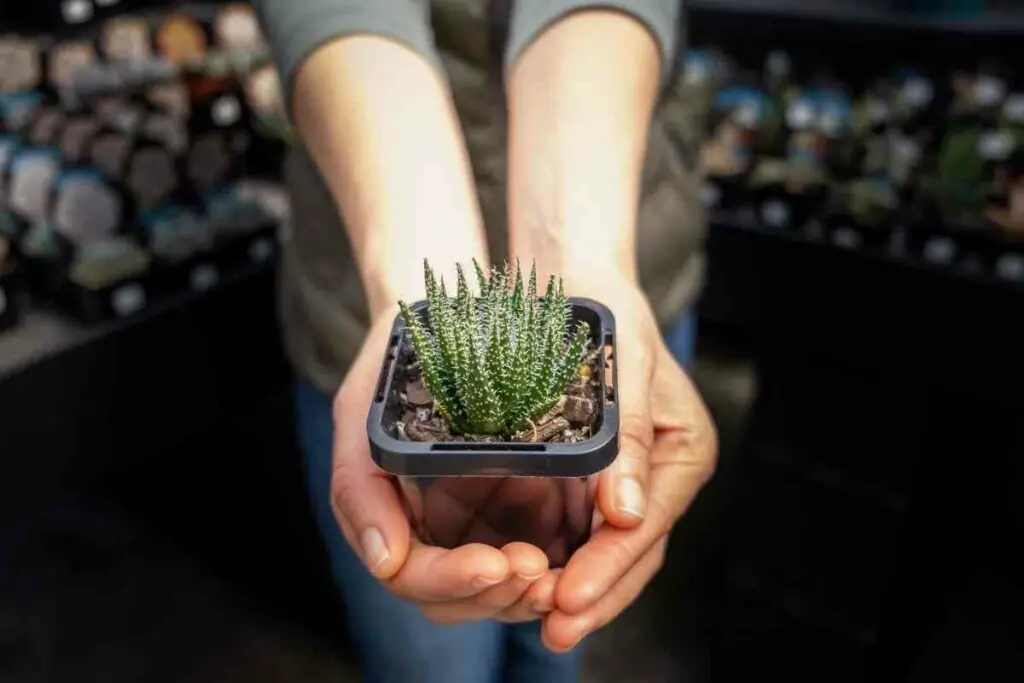Succulents are sun-loving plants that require light to survive and develop.
When your plants are indoors, it can be challenging to provide them with adequate light.
Grow lights are used as additional lighting when there is insufficient sunshine or as the primary source of light for the plants.
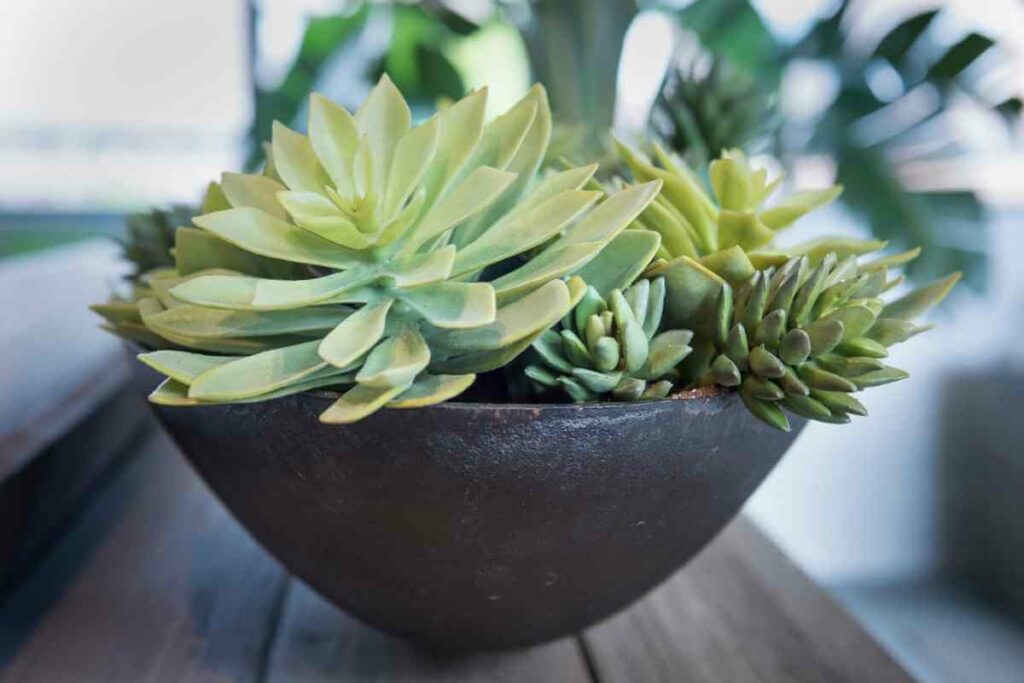
They are designed to either imitate the sun’s light spectrum or to offer a color spectrum tailored to the demands of a specific plant to encourage plant development through photosynthesis.
Nothing beats natural sunlight, but succulents can thrive under fluorescent lighting as well. When selecting a succulent to thrive in a fluorescent-lit environment, seek one that does not require full sun or exceptionally intense light.
Succulents that can grow in low light include:
- Aloe
- Schlumbergera
- Haworthias
- and Sansevieria
What to Consider Before Growing Succulents Under Fluorescent Light
Type of Succulent
Learn about the succulents you’re raising since each succulent species has unique growth requirements.
Some can live in areas with much light, while others flourish in areas with insufficient light.
As long as you supply the correct quantity of light to the succulent, you will be able to grow it as well as, if not better, under artificial light.
Plant’s Current Stage
If your succulents are seedlings, don’t hesitate; you won’t be disappointed if you grow them under a fluorescent light.
However, if your plants are in bloom, you must supply a red spectrum source in addition to the blue.
Bulb Specifications
- Type of Fluorescent: For many years, fluorescent lighting has been used. The three most popular types utilized by farmers are T5, T8, and T12. Because of its higher performance, T5 is the best of the three.
- Color of the Light: Succulents tend to use blue light to grow larger, while red light stimulates flowering. Fluorescent lights that produce only blue and red lights are slightly more efficient, but a full spectrum, white light supports healthy plant growth. Succulents like blue light to grow bigger, but red light stimulates flowering. Fluorescent lights that solely emit red and blue light are marginally more efficient, while full-spectrum white lights promote healthy plant development.
- Wattage: The more lumens per watt light has, the more efficient it is.
Growing Space
Fluorescents come in a variety of shapes and sizes.
If you have a limited area, go for bulbs or T5 tubes, typically 5/8 in width.
Otherwise, for larger spaces, use tubes that cover more ground.
How to Grow Succulents Under Fluorescent Lights
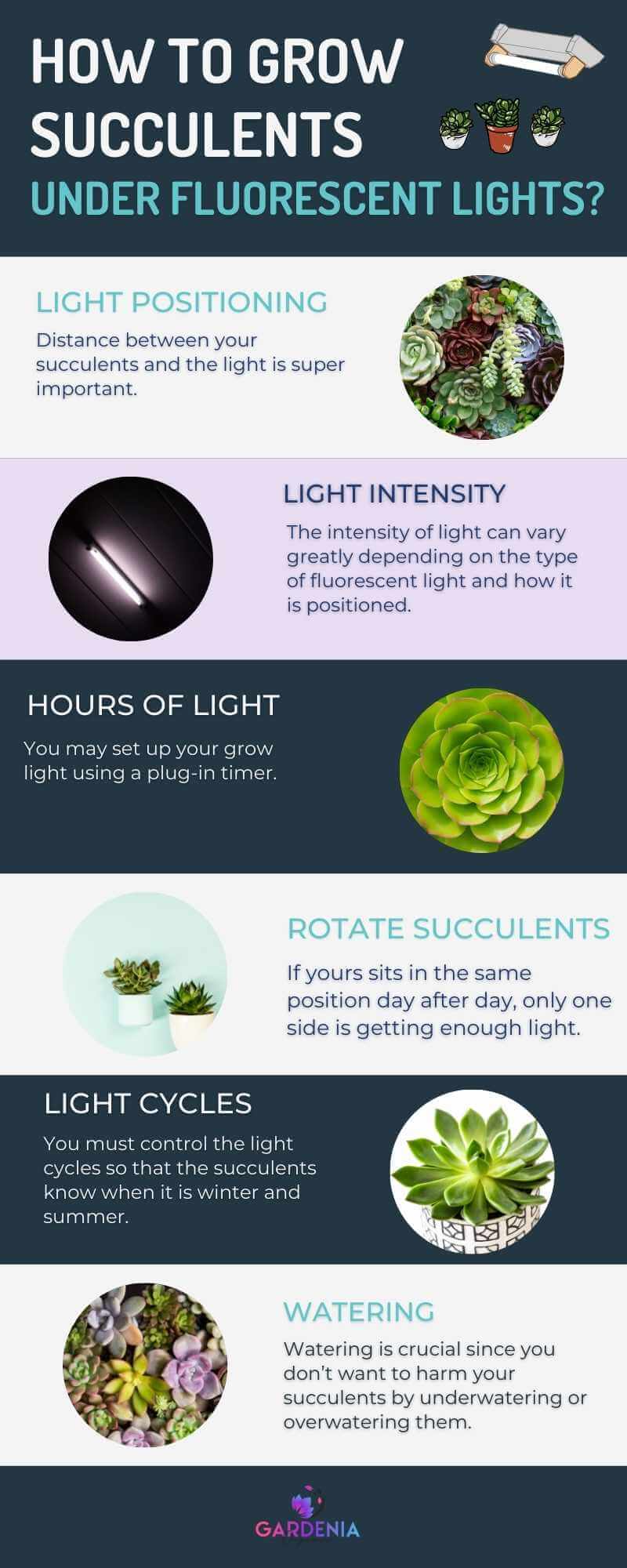
Light Positioning
Distance between your succulents and the light is super important.
Therefore, it is crucial to figure out how to position your plants under the light. However, this may require a lot of experience.
Getting placement of your fluorescent lights correct is a balancing act between the intensity and the heat output.
The type of succulents you’re growing, as well as the grow light you’re using, influence light placement.
In general, it should be at least 6 inches long and no longer than 40 inches:
- If you get too close, the heat generated by the bulbs can burn your succulents.
- If it is too far away, there is insufficient illumination for succulents to grow appropriately.
Light Intensity
The intensity of light emitted by your fluorescent can vary greatly depending on the type of fluorescent light and how it is positioned.
The intensity of the light emitted by fluorescent light is determined by its size.
Smaller grow lights may not have the same intensity as larger ones, so you may need to leave them on for longer to provide enough illumination for your succulent.
As a result, you must determine how bright the light from the bulb is.
From Experience: Lights that generate at least 2,000 lumens per square foot and respond effectively in the 3000K to 6000K temperature range are required for succulents.
Hours of Light
You may set up your grow light using a plug-in timer.
This makes growing succulents under fluorescents extremely simple because you can set it to turn on and off depending on the light requirements of your plant.
The rule of thumb is that the lower the intensity of the light, the longer the grow light must be turned on:
- For succulents that receive very little or no natural light, set it to stay on for 16 to 18 hours and ensure light reaches the lower branches.
- For plants that receive low- or medium-level natural light during the day, leave the light on for 12 to 14 hours each day.
Rotate Succulents Frequently
Succulents need direct light, but if yours sits in the same position day after day, only one side is probably getting enough light.
They will lean toward the fluorescent light, thus rotating them will assist them in standing upright.
Regulate the Light Cycles According to Seasons
If you use grow lights on your succulents all year, you must control the light cycles so that the succulents know when it is winter and summer.
In the summer, you should increase the light and duration, and in the winter, you should decrease the light and time:
- During summer, you can have them on 24/0 or 20/4 light cycle.
- In winter, you can first have them on 20/4 light cycle a day and slowly increase the darkness period to 16/89 (light/dark).
Watering
Watering is crucial since you don’t want to harm your succulents by underwatering or overwatering them.
This will be heavily influenced by the season:
- During the summer, water the succulents when the soil seems dry, at least an inch or two if you insert your finger in the dirt.
- In the winter, water only once a month.
Final Thoughts
Healthy succulents do not appear by chance.
It can be challenging to grow them indoors, especially under fluorescent lighting, but it is still possible.
Your succulents will have a higher chance of survival if you make the proper light changes and provide basic care for them.
